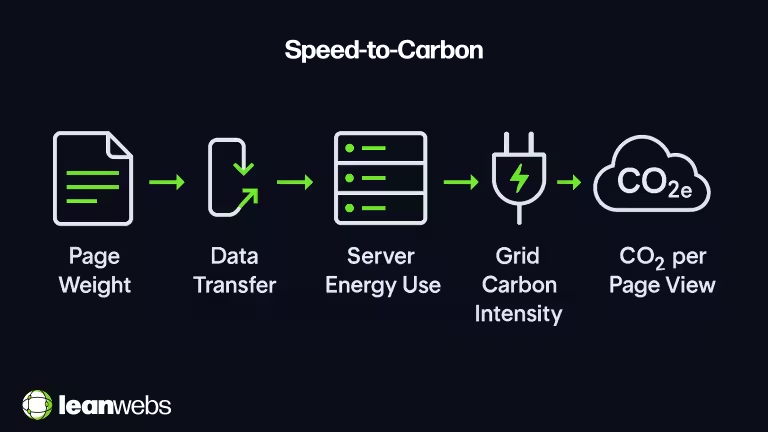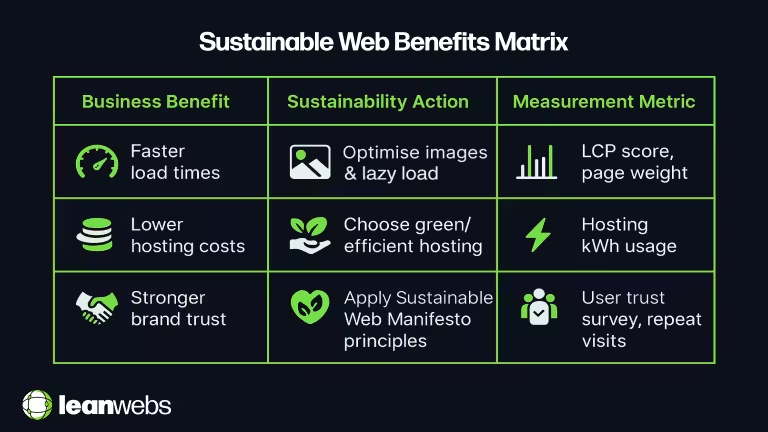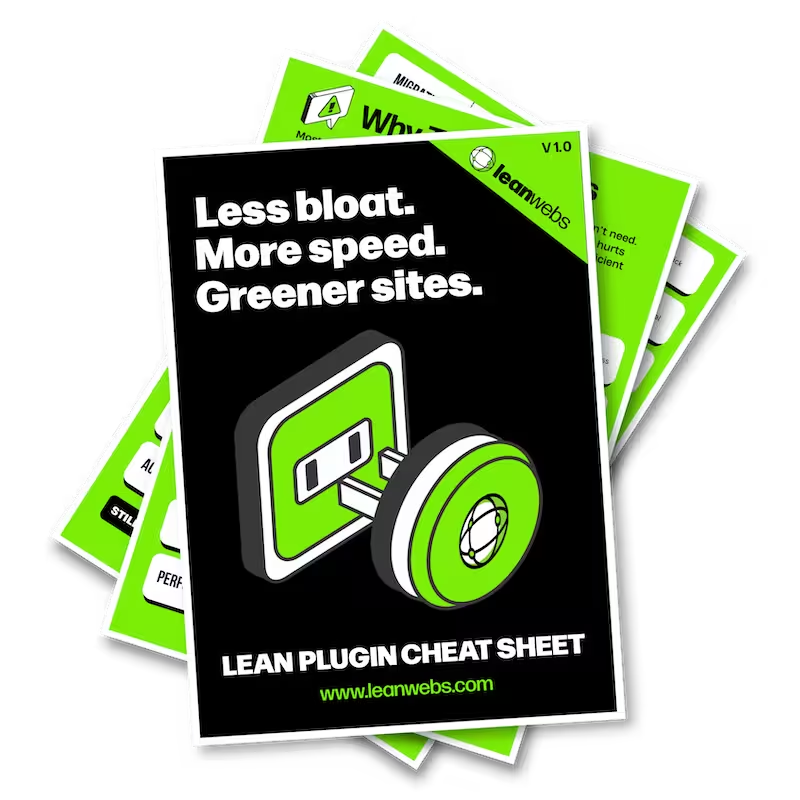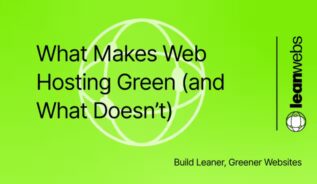A faster, cleaner website is more than an environmental choice, it’s a performance upgrade, a brand builder, and a cost saver. Think of it as the online equivalent of swapping a gas‑guzzler for a nimble electric – smoother ride, lower costs, and far less pollution. Sustainable web design focuses on reducing energy use and carbon emissions without sacrificing speed or user experience. For small businesses, this means happier visitors, lower hosting bills, and a greener reputation.
Table of Contents
How sustainable website design boosts performance and cuts costs
Faster, leaner pages aren’t just good manners online, they’re your shortcut to happier visitors and lower bills . Estimates suggest the broader digital ecosystem, including the internet, devices, and infrastructure, accounts for around 3.7% of global greenhouse gas emissions, of which about 1.4% is CO₂, much of it from bloated, slow-loading pages.
By trimming file sizes and improving Core Web Vitals (LCP, INP, CLS), you give visitors a smoother experience while cutting emissions. Google data shows that faster sites see lower bounce rates and higher conversions, meaning these improvements have an immediate business payoff.
For online stores, that can mean more completed checkouts; for service‑based businesses, it builds credibility and trust; and for non‑profits, it reinforces mission‑driven values.
Sustainable Web Manifesto principles that drive results
The Sustainable Web Manifesto calls for clean, efficient, open, honest, regenerative, and resilient websites, values that also drive better performance and trust. When you follow these principles, you’re building loyalty and showing responsibility.
We’ve seen clients win on both counts: one museum’s online collection went from sluggish to snappy after we swapped bloated scripts for lighter, accessible code, and their annual energy use dropped in the process.
The speed-to-carbon link is direct: heavier pages require more energy to load. Factoring in your hosting’s kWh use and the grid intensity of your server location helps you choose options that are both faster and greener. These eco-friendly website performance improvements can also reduce hosting costs over time.
Real-world examples of sustainable web benefits
Small changes can deliver big wins. One retailer cut homepage weight by 45%, halved LCP time from 4.2s to 2.1s, and reduced annual emissions by 40kg CO₂e. These results came from using the Website Carbon calculator and EcoPing to measure impact.
Whether you’re optimising a low‑carbon WordPress site for e‑commerce or a professional services site, start with measurement. See our our What is sustainable web design? guide, then try How to calculate your website’s carbon impact to track progress.
Quick, no-code steps for a faster, eco-friendly website
These quick, no‑code tweaks are the espresso shot your site needs. Faster pages, happier users, smaller footprint:
- Choose green or efficient hosting and enable a CDN. Our Web hosting performance guide shows you how to find providers that cut both load times and carbon.
- Optimise images – convert to WebP or SVG, enable lazy loading, and keep file sizes minimal. Ideal for: Portfolios, blogs, and visual-heavy sites.
- Streamline video – host offsite on an efficient platform, avoid autoplay, and use thumbnails until clicked. Ideal for: Sites with hero videos or tutorials.
- Simplify fonts – stick to system defaults or self‑hosted variable fonts. Ideal for: Sites with performance or privacy goals.
- Audit plugins – remove those you no longer need. Ideal for: WordPress sites with plugin bloat.
- Limit third‑party scripts – keep only essential ads and trackers. Ideal for: Sites running multiple marketing tags.
- Minify code – remove unused CSS/JS for leaner pages.
- Regularly measure your carbon impact – Website Carbon or EcoPing can do this in minutes.
Pick one and run it today, then measure the difference.
Speed-to-carbon explained: why lighter pages matter

Every kilobyte counts. Here’s how your site’s size translates into carbon emissions:
- Page weight – the total size of all files sent to a visitor.
- Data transfer – bigger pages use more bandwidth.
- Server energy use – each transfer requires electricity to run servers and network hardware.
- Grid carbon intensity – the CO₂ produced per kWh depends on the energy mix in your server’s location.
- CO₂e per page view – multiply energy use by carbon intensity to get emissions.
Example:
- 1MB page: ~0.5g CO₂e per view → 5,000 monthly views ≈ 2.5kg CO₂e/year.
- 3MB page: ~1.5g CO₂e per view → 5,000 monthly views ≈ 7.5kg CO₂e/year.
When we trimmed one client’s homepage from 3MB to under 1MB, their carbon per page dropped by two‑thirds, and load time halved.
Matching sustainability actions to your brand goals
Your sustainability efforts can also meet compliance needs. The EU European Accessibility Act (EAA) supports efficient, accessible websites. The EU CSRD/ESRS standards increasingly require disclosure of your digital operations’ footprint.
Trimming third-party scripts (ads, tags, widgets) not only speeds up your site but reduces unnecessary energy use. For non‑profits and mission‑led organisations, that’s a visible win for both values and performance. To find easy wins, start with our Why audit your website? guide.

Where to get expert help for technical next steps
For more advanced steps, the W3C Web Sustainability Guidelines (WSG) offer detailed, actionable advice. LeanWebs can help you translate these into a tailored action plan, setting up a measurement workflow – audit → prioritise → implement → report – so you keep both performance and environmental KPIs on track.
- Core Web Vitals: Optimise LCP by reducing hero image size and deferring non-critical CSS; monitor INP and CLS in Chrome UX Report.
- Hosting kWh: Use hosting provider’s annual energy report to estimate per-page load cost.
- Measurement workflow: Automate tests with EcoPing API or Lighthouse CI; store results in GA4 or a spreadsheet for quarterly review.
- Third-party scripts: Implement consent-based loading and async/defer attributes; periodically review necessity.
Curious How Fast and Green Your Site Is?
We analyse your website's carbon footprint, page weight and performance. See what's slowing it down and how to clean it up.
Conclusion: Turning awareness into advantage
Making your site faster, leaner, and cleaner benefits both the planet and your bottom line. Start by measuring your current impact, then take one step today – switch hosting, optimise images, or run a carbon report. Small moves add up, and the results will show in your analytics and in how your customers see you.



